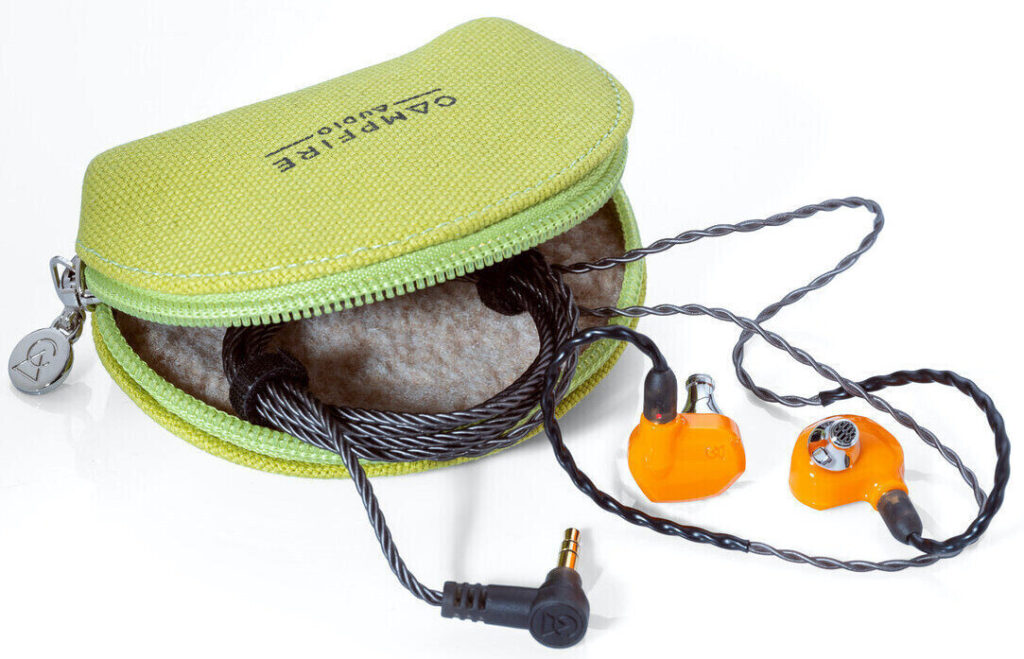Campfire Audio Satsuma and Honeydew in-ear headphones: Balanced Armature or dynamic driver in 3D printed body
Campfire Audio Satsuma and Honeydew in-ear headphones are virtually indistinguishable in appearance. The “glossy-crystal” design of the enclosures made of ABS plastic (they are 3D printed – this is how the inner volume of the acoustic chamber was precisely formed) is complemented by a stainless steel “nose”. The difference between Satsuma and Honeydew is in color: Satsuma has an orange body, while Honeydew has a muted yellow.
Inside, the models differ radically. The older ones, Honeydew, are equipped with a custom dynamic driver with a 10mm LCP diaphragm. Younger Satsumas use a wide-range armature driver, supplemented by a rear port – a calibrated hole in the case designed to equalize the frequency response.

Special attention is paid to the cable in both models. It is a silver-plated copper litzedrate made of two stranded insulated conductors. Special MMCX connectors are made of beryllium copper, designed to ensure a reliable connection during multiple docking-undocking. Both models are complemented by the Vine Green compact canvas case, made in Portugal.
Both models play in the range from 5 Hz to 18 kHz and are capable of producing a sound pressure of 94 dB. Honeydew’s impedance is almost 18 ohms, while Satsuma’s is noticeably higher at 46.4 ohms.

In the US, Campfire Audio Satsuma in-ear headphones cost $200, and the Honeydew model will cost $250.




